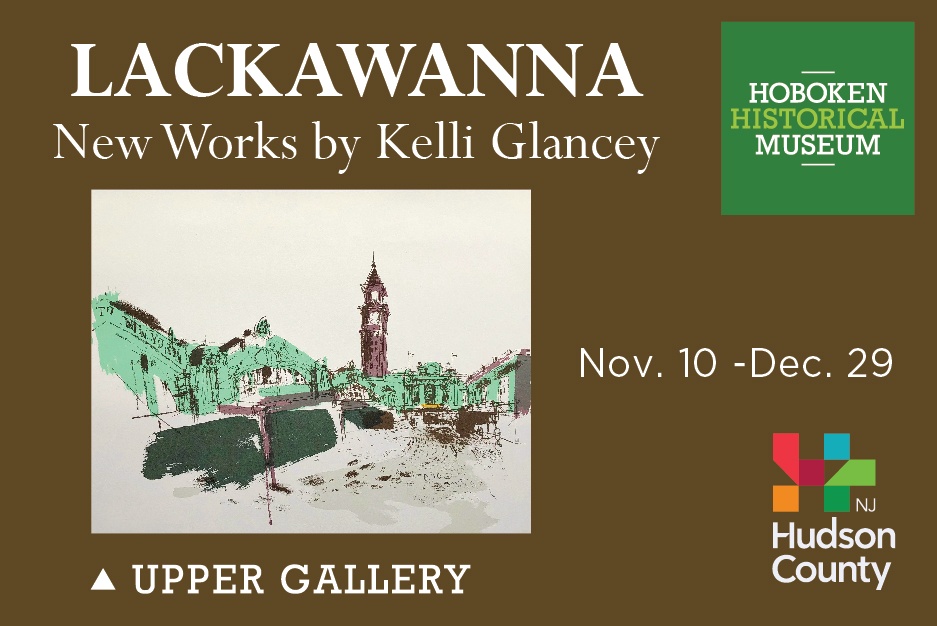Kelli Glancey – “Lackawanna”
November 10 - December 29

Artist Kelli Glancey moved to Hoboken in 1985 to study at Parsons School of Design in NYC, where today she is a part-time assistant professor. She says that residing in Hoboken is distinctive in many ways and is so rich historically.
“I am a visual person. I walk the streets daily and stare at the details of the many beautiful structures and homes, always happier when I see a place renovated rather than destroyed for new construction or high rises. This, I feel, is vital to the integrity and character of this quaint, mile square city. I have watched it change a lot since the mid-1980s but it still feels like home.”
One distinctive fixture of the Hoboken cityscape is the historic 1907 Lackawanna Terminal, the gateway to Hoboken and NYC for so many visitors and new arrivals. The terminal and its surroundings are the focus of the exhibit, “Lackawanna ~ from drawing to print, New Works by Kelli Glancey,” going on view from Nov. 10 through Dec. 29 in the Upper Gallery of the Hoboken Museum. On display will be works in silkscreen, lithography and woodcut all based on her observational drawings as well as solar-plate photo-etchings.
Glancey explains: “‘Lackawanna from drawing to print’ is an ongoing discovery of both past and present. For many years, Hoboken and my lifelong passion for travel, trains, preservation and conservation have been a part of my drawings and ideas. I have marveled at this historic structure in my Mile Square city since I first took the train here from western Jersey many years ago. Completed in 1907, this magnificent architectural masterpiece is the only remaining terminal along the river still operational. Following his studies at L’École des Beaux Arts in Paris, it was designed by Brooklyn-born architect Kenneth MacKenzie Murchison in the classic Beaux Arts architectural style.”
Glancey marvels that the Lackawanna terminal has survived, and says that’s due in part to its location and also to its remarkable design, seamlessly connecting train, ferry and former trolley service, today replaced by buses. The PATH subway system, engineered by Dewitt Clinton Haskin, also connects directly below the Lackawanna Terminal and has been operational since 1908.
She found a personal connection to the terminal, she says. “In addition to its history, I ponder the many who have built it, worked in and passed through it, including my own Hoboken family roots.” She found out recently that her maternal great uncle once worked for the railroad after serving in World War I.
“I am optimistic the Lackawanna terminal will continue to survive, rebuild and thrive as a gateway to passengers on both sides of the Hudson,” she adds. “I hope it will serve as a symbol of past to future possibilities of a modernized 21st century infrastructure, reigniting mass transit as a viable means of travel and environmental conservation.”
Glancey describes the works on view as drawings that began in her sketchbook. “My drawings are a visual journal of my travels and the world around me, observational interpretations of people, places and things. Drawing on location allows me to stop, feel and experience what I am passing by or through.”
Afterwards, in the studio, she develops those drawings further using various methods of printmaking, including hand-printed silkscreens, lithographs, woodcuts, and solar-plate photo etchings. “As a printmaker,” she says, “I delight in the ability to transform one into many. All the techniques allow me to create multiples, to play and explore variations of the same image. The possibilities are infinite.”
The exhibit is supported by a block grant from the State/County Partnership program for the Arts, administered by the Hudson County Division of Cultural and Heritage Affairs.
